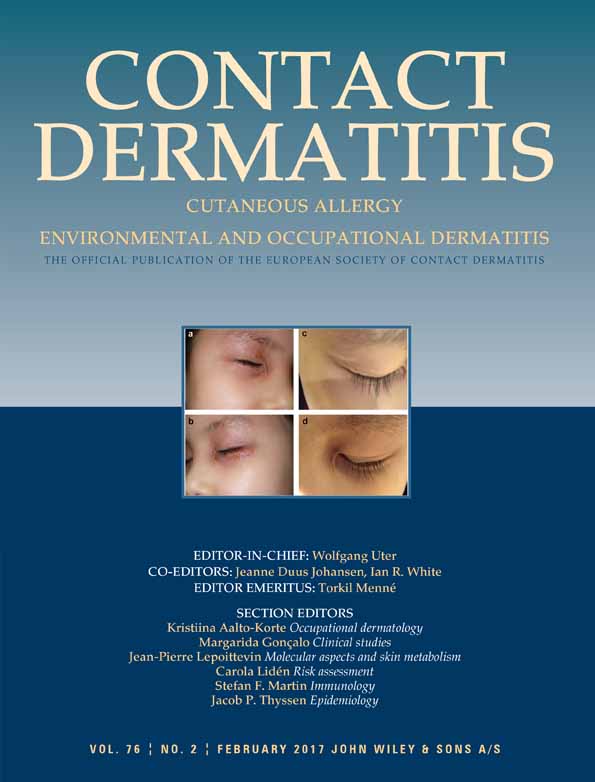Can contact allergy to p-phenylenediamine explain the high rates of terpene hydroperoxide allergy? – An epidemiological study based on consecutive patch test results
Summary
Background
Contact allergy to linalool hydroperoxides (Lin-OOHs) and limonene hydroperoxides (Lim-OOHs) is common. Similarly to what occurs with the terpene hydroperoxides, reactive intermediates formed from p-phenylenediamine (PPD) can cause oxidative modifications of tryptophan residues on proteins in mechanistic studies.
Objectives
To test the hypothesis that patients sensitized to PPD are at increased risk of concomitant reactivity to either of the terpene hydroperoxides, owing to a ‘common pathway’ of skin protein oxidation.
Methods
A database study of consecutively patch tested eczema patients (n = 3843) from 2012 to 2015, tested concomitantly with PPD, Lim-OOHs and Lin-OOHs, was performed. Associations were examined by level of concordance and odds ratios (ORs) adjusted for age, sex, and contact allergy to fragrance mix I and fragrance mix II.
Results
Concomitant reactions to PPD were seen in 2.2% of Lim-OOH-positive patients and in 4.9% of Lin-OOH-positive patients. Neither proportion was higher than expected by chance. No association existed between PPD and Lim-OOH patch test reactivity. In a multiple logistic regression analysis, PPD allergy was associated with an insignificantly increased risk (OR 2.11, 95%CI:0.92–4.80) of a positive patch test reaction to Lin-OOHs.
Conclusions
PPD sensitization cannot explain the high rates of sensitization to Lin-OOHs and/or Lim-OOHs. Contact allergy to oxidized linalool is more strongly associated with fragrance allergy than with PPD allergy.




